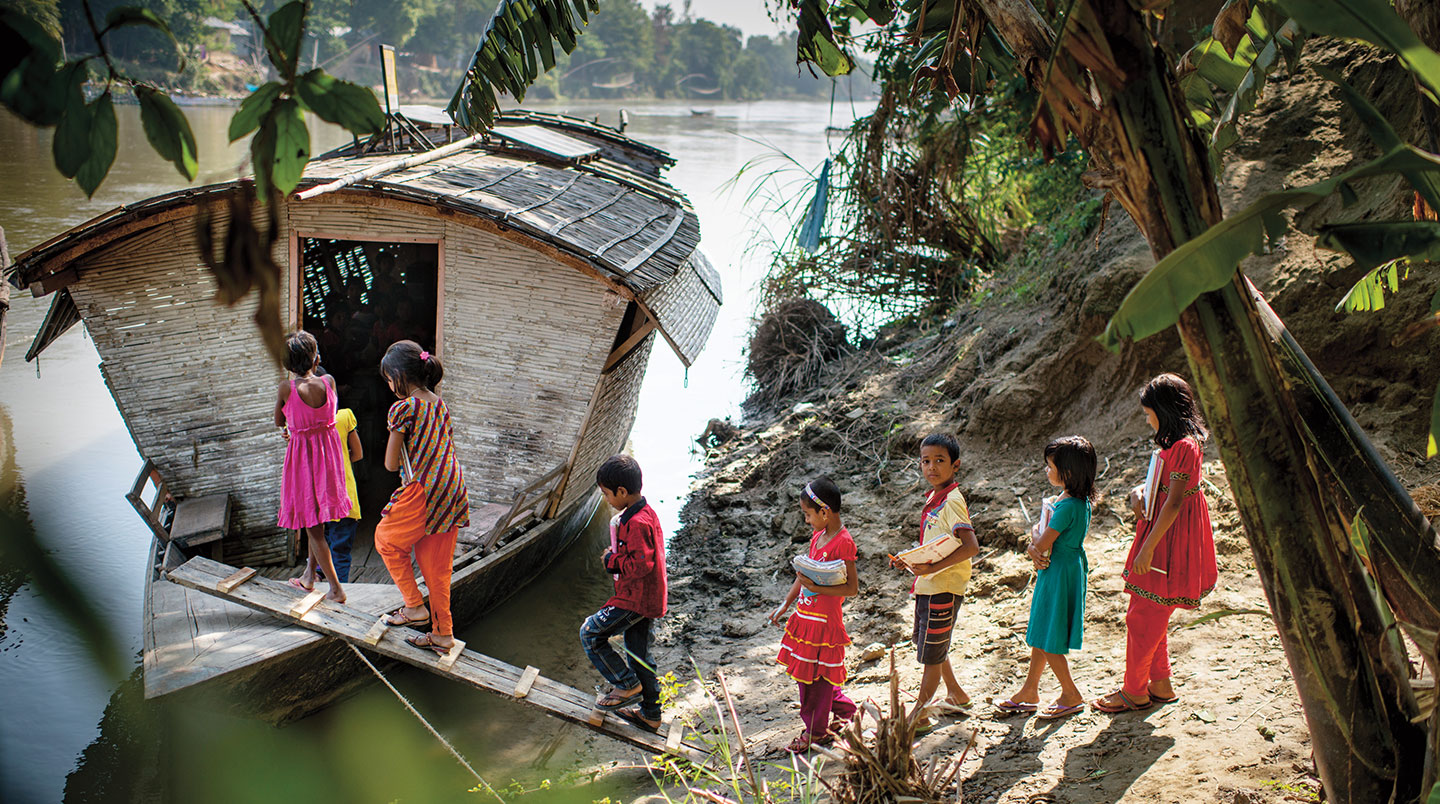Jim McMahon/Mapman ®
In most places, rain is a minor nuisance. Your hair gets wet on the way to school. You have to wear an ugly jacket. If it’s really bad, your soccer game might get canceled.
But if you live in the Asian country of Bangladesh, it could be a lot worse than that. Every summer, huge storms pound Bangladesh. Flooding leaves roads underwater. Villages are cut off from the rest of the world. And kids can’t get to school—unless their schools can float.
In most places, rain is annoying. Your hair gets wet on the way to school.
You have to wear an ugly jacket. Your soccer game might get canceled.
But if you live in the country of Bangladesh, it can be much worse. Every summer, huge storms pound the country. Roads get flooded. Villages are cut off from the rest of the world. And kids can’t get to school—unless their schools can float.
In most places, rain is a minor inconvenience. Your hair gets wet on the way to school, and you have to wear an ugly jacket. If it’s really bad, your soccer game might get canceled.
But if you live in the Asian country of Bangladesh, your rainy days could be far worse. Every summer, huge storms pound Bangladesh. Flooding leaves roads underwater, villages are cut off from the rest of the world, and kids can’t get to school—unless their schools can float.

